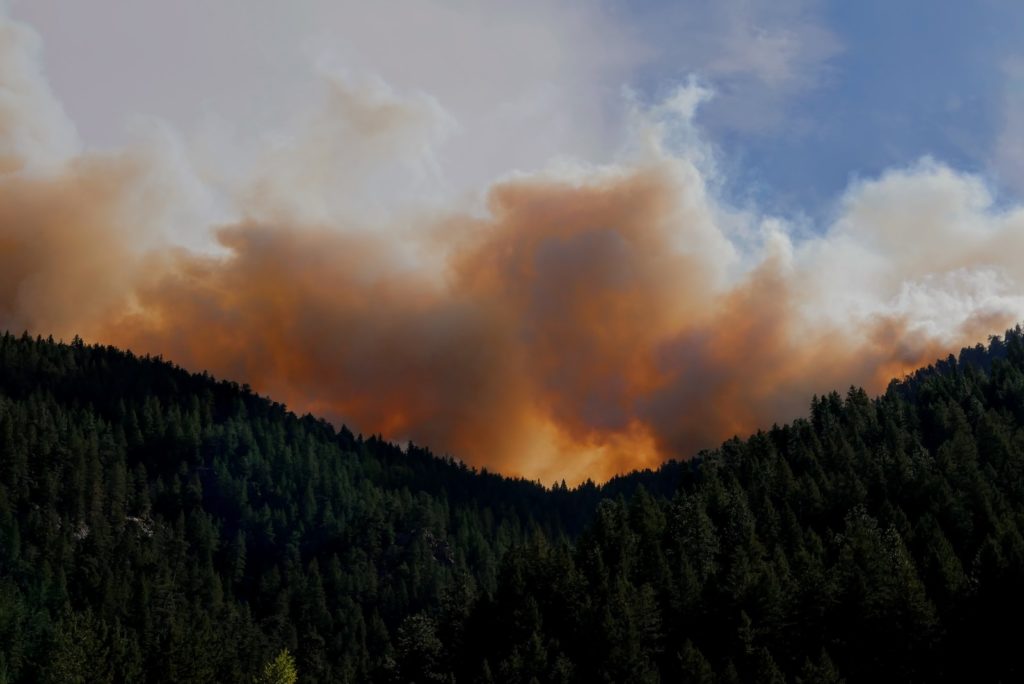A FRAMEWORK FOR ASSESSING VULNERABILITY, RESILIENCE, ADAPTATION, AND A JUST TRANSITION IN FRONTLINE COMMUNITIES

Just Solutions is announcing the publication of “The Perfect Storm of Extraction, Poverty, and Climate Change: A Framework for Assessing Vulnerability, Resilience, Adaptation, and a Just Transition in Frontline Communities,” a report by Jennifer Moon, of Moonlight Solutions, and Zully Juarez, Senior Research and Policy Analyst here at Just Solutions.
Read the full report here
Using a case study approach that examines six communities, the Prioritizing Frontline Communities Framework assesses the “pre-existing” economic, health, and infrastructure conditions that put these communities at greater risk. The effectiveness of social and climate-related policymaking can be assessed based on the degree to which they result in improved outcomes on key indicators and thereby increase the capacity of these communities to cope with, prepare for, and respond to climate change and participate equitably in the transition to a clean energy economy.
Examining the relationships between these domains – Economic Conditions, Health Conditions, and Infrastructure Conditions – and vulnerability to climate change is still emerging, but such studies are not new. Discussions related to climate risk frequently consider socioeconomic indicators, such as poverty level, education level, or disability, and health. Often, they include race. Researchers frequently acknowledge that socioeconomic and health conditions make communities more vulnerable to climate change, particularly climate-related disasters.
This study takes a different approach and considers the continuum of responses that span community efforts to contend with climate change. It seeks not only to identify those factors that indicate vulnerability but also to establish a causal relationship – these factors are what put these communities at greater risk. In exploring this causal relationship, it argues that the “pre-existing conditions” experienced by these communities are the direct consequence of enacted policies that have deprived these communities of resources and assets, environmentally degraded or undervalued their lands, or facilitated systemic racism. The incorporation of community perspectives on these topics throughout the paper grounds and validates the data collected.
Introduction
Frontline communities bear the disproportionate burden of environmental and climate impacts. We know the communities that are at the greatest risk. We can identify factors that put them at risk. We are less successful in communicating causal relationships, proposing systemic, upstream policy solutions that act upon these causal relationships, and identifying ways to measure whether or not policy solutions result in improved outcomes.
Through a case study approach, this paper introduces a Prioritizing Frontline Communities Framework, which will be expanded upon over time, for considering and measuring the adaptive capacity and resilience of frontline communities as they confront climate change. It examines the “pre-existing” conditions in six frontline communities that are among the most vulnerable to and affected by climate change and considers the effects of these conditions on the local capacity to cope with, prepare for, and respond to ongoing climate-related challenges. The six communities are Glacier County, Montana; Holmes County, Mississippi; Hidalgo County, Texas; McDowell County, West Virginia; East End, Bridgeport, Connecticut; and East Las Vegas, Nevada.
Key Findings
The study concludes that:
- These frontline communities are where they are today because of public policy choices made and actions taken in the past.
- Based on the indicators examined, none of these communities are adequately prepared to meet their day-to-day needs as they contend with climate change or to respond to a natural disaster, public health emergency, or economic crisis.
- Despite the difficult conditions they face, they all have community strengths, demonstrated adaptive capacity and resilience, and an innovative spirit when faced with adversity. However, in the absence of effective policy change to improve outcomes, increase resources, and prioritize their needs, community assets will be further tested by climate change, conditions will likely worsen, and these communities will risk being left out of a just transition.
- There are policies that could be adopted to improve community conditions, increase adaptive capacity and resilience, and ensure a just transition.
- We will know whether or not public policies are working to bring about climate justice and a just transition based on the direction of key indicators in frontline communities.
Data Domains and Indicators
The “pre-existing conditions” examined in this study are organized into three domains. These are Economic Conditions, Health Conditions, and Infrastructure Conditions. Indicators associated with each domain have been chosen based on their particular relevance to the ability to cope with, prepare for, and respond to climate change. Together, they indicate vulnerability across all domains. The ways in which indicators in these domains intersect suggest a perilous future for frontline communities in the absence of policies that result in measurable improvements in outcomes.
Conclusion
Frontline communities are experiencing greater effects of climate change in terms of impact and frequency, with significant impacts on community life. Given the exposure of these communities to risk of all kinds, these impacts are likely to increase in the future without effective policy solutions and implementation of these solutions. Nearly a third of the U.S. population – over 92 million people – lives in a low- or moderate-income community. To disregard so many frontline communities not only puts residents at considerable risk, it also threatens our ability to meet climate goals and perpetuates the wrongs that have put these communities in jeopardy. Prioritizing these communities, preserving the community assets that currently exist, building upon long histories of resilience, and enacting policies that demonstrably improve underlying conditions can ensure that communities like these thrive in a just transition.
